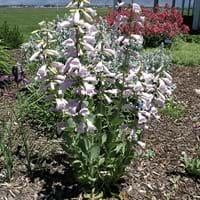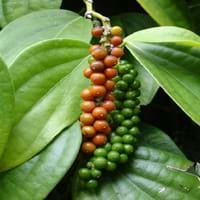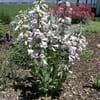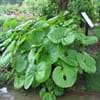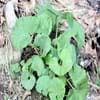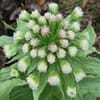Life Span
Perennial
Perennial
Type
Flowering Plants
Broadleaf Evergreen, Vines
Origin
North-Central United States, Central United States, Western United States, Texas
India, Indonesia, Southeast Asia, Southern Asia
Types
Not Available
Red pepper, Orange pepper
Number of Varieties
Not Available
Habitat
Cultivated Beds, Sandy areas, Sunny Edge
Moist Soils, orchards, Temperate Regions
USDA Hardiness Zone
3-9
8-15
Sunset Zone
1a, 1b, 2a, 2b, 3a, 3b, 10
H1, H2, 8, 9, 14, 15, 16, 17, 18, 19, 20, 21, 22, 23, 24
Habit
Upright/Erect
Clump-Forming
Minimum Width
Not Available
Flower Color
White
Lemon yellow
Flower Color Modifier
Bicolor
Bicolor
Fruit Color
Not Available
Red, Green, Light Green
Leaf Color in Spring
Light Green, Gray Green
Light Green, Dark Green
Leaf Color in Summer
Gray Green
Light Green
Leaf Color in Fall
Gray Green
Light Green, Dark Green
Leaf Color in Winter
Not Available
Light Green, Dark Green
Leaf Shape
Oval to egg shaped
Circular cordate
Plant Season
Summer
Spring, Summer, Fall, Winter
Sunlight
Full Sun, Partial Sun
Full Sun, Partial Sun, Partial shade
Type of Soil
Clay, Loam
Loam, Sand
The pH of Soil
Neutral, Alkaline
Acidic, Neutral, Alkaline
Soil Drainage
Well drained
Average
Bloom Time
Late Spring, Early Summer, Summer
Not Available
Tolerances
Drought
Drought
Where to Plant?
Container, Ground, Pot
Container, Ground
How to Plant?
Cuttings, Divison, Seedlings
Seedlings, Stem Planting, Vegetative Reproduction
Plant Maintenance
Medium
Medium
Watering Requirements
Keep the Soil well drained, Needs a lot of moisture in the growing season, Reduce watering in winter
Do Not over Water, Sprinkle water over foliage, Water every two or three days during warmer months
In Summer
Lots of watering
Lots of watering
In Spring
Moderate
Moderate
In Winter
Average Water
Average Water
Soil pH
Neutral, Alkaline
Acidic, Neutral, Alkaline
Soil Type
Clay, Loam
Loam, Sand
Soil Drainage Capacity
Well drained
Average
Sun Exposure
Full Sun, Partial Sun
Full Sun, Partial Sun, Partial shade
Pruning
Remove damaged leaves, Remove dead branches, Remove dead leaves
A hard prune may be necessary if the plant becomes woody, Remove dead branches, Trim each shoot back to the first set of leaves
Fertilizers
All-Purpose Liquid Fertilizer
10-10-10 diluted liquid fertilizer, All-Purpose Liquid Fertilizer, Do not let fertilizers touch the leaves
Pests and Diseases
Red blotch
Aphids, Beetles, Root rot, Rust, Scab
Plant Tolerance
Drought
Heat Tolerance, Humidity, Salt and Soil Compaction
Flowers
Showy
Not Available
Flower Petal Number
Single
Single
Foliage Texture
Medium
Medium
Foliage Sheen
Matte
Matte
Attracts
Birds, Bumblebees
Aphids, Leafminer, Snails, Squirrels
Allergy
no allergic reactions
Oral Allergy
Aesthetic Uses
Showy Purposes
Beautification, Cottage Garden, Decorating walls
Beauty Benefits
Not Available
Acne, Blackheads
Environmental Uses
Air purification
Fixes Nitrogen, Insect Repellent
Medicinal Uses
Analgesic, Febrifuge, Stomachic
Acid Reflux, Dysentry, Healthy teeth, Inflammation, Oral health
Part of Plant Used
Root
Dried seeds
Other Uses
Chewing
Culinary use, Oil is used for aromatherapy, Used in herbal medicines
Used As Indoor Plant
No
Yes
Used As Outdoor Plant
Yes
Yes
Garden Design
Rock Garden / Wall, Wildflower
Container, Feature Plant, Hedges, Screening / Wind Break, Tropical
Botanical Name
PENSTEMON grandiflorus 'Prairie Snow'
Piper nigrum
Common Name
Large Beardtongue, Prairie Snow Beardtongue
Peppercorn, Piper, Black pepper
In Hindi
Large Beardtongue
काली मिर्च
In German
Large Beardtongue
Pfeffer
In French
Large Beardtongue
Piper nigrum
In Spanish
Large Beardtongue
Poivrier noir
In Greek
Large Beardtongue
μαύρο πιπέρι
In Portuguese
Large Beardtongue
Pimenta-preta
In Polish
Large Beardtongue
Pieprz czarny
In Latin
Large Beardtongue
nigrum piperis
Phylum
Magnoliophyta
Magnoliophyta
Class
Magnoliopsida
Magnoliopsida
Order
Scrophulariales
Piperales
Family
Scrophulariaceae
Piperaceae
Clade
Angiosperms, Asterids, Eudicots
Angiosperms, Monocots
Tribe
Not Available
Not Available
Subfamily
Not Available
Not Available
Number of Species
Not Available
Not Available
Season and Care of Large Beardtongue and Black pepper
Season and care of Large Beardtongue and Black pepper is important to know. While considering everything about Large Beardtongue and Black pepper Care, growing season is an essential factor. Large Beardtongue season is Summer and Black pepper season is Summer. The type of soil for Large Beardtongue is Clay, Loam and for Black pepper is Loam, Sand while the PH of soil for Large Beardtongue is Neutral, Alkaline and for Black pepper is Acidic, Neutral, Alkaline.
Large Beardtongue and Black pepper Physical Information
Large Beardtongue and Black pepper physical information is very important for comparison. Large Beardtongue height is 50.80 cm and width 35.60 cm whereas Black pepper height is 180.00 cm and width Not Available. The color specification of Large Beardtongue and Black pepper are as follows:
Large Beardtongue flower color: White
Large Beardtongue leaf color: Light Green and Gray Green
Black pepper flower color: Lemon yellow
- Black pepper leaf color: Light Green and Dark Green
Care of Large Beardtongue and Black pepper
Care of Large Beardtongue and Black pepper include pruning, fertilizers, watering etc. Large Beardtongue pruning is done Remove damaged leaves, Remove dead branches and Remove dead leaves and Black pepper pruning is done A hard prune may be necessary if the plant becomes woody, Remove dead branches and Trim each shoot back to the first set of leaves. In summer Large Beardtongue needs Lots of watering and in winter, it needs Average Water. Whereas, in summer Black pepper needs Lots of watering and in winter, it needs Average Water.
